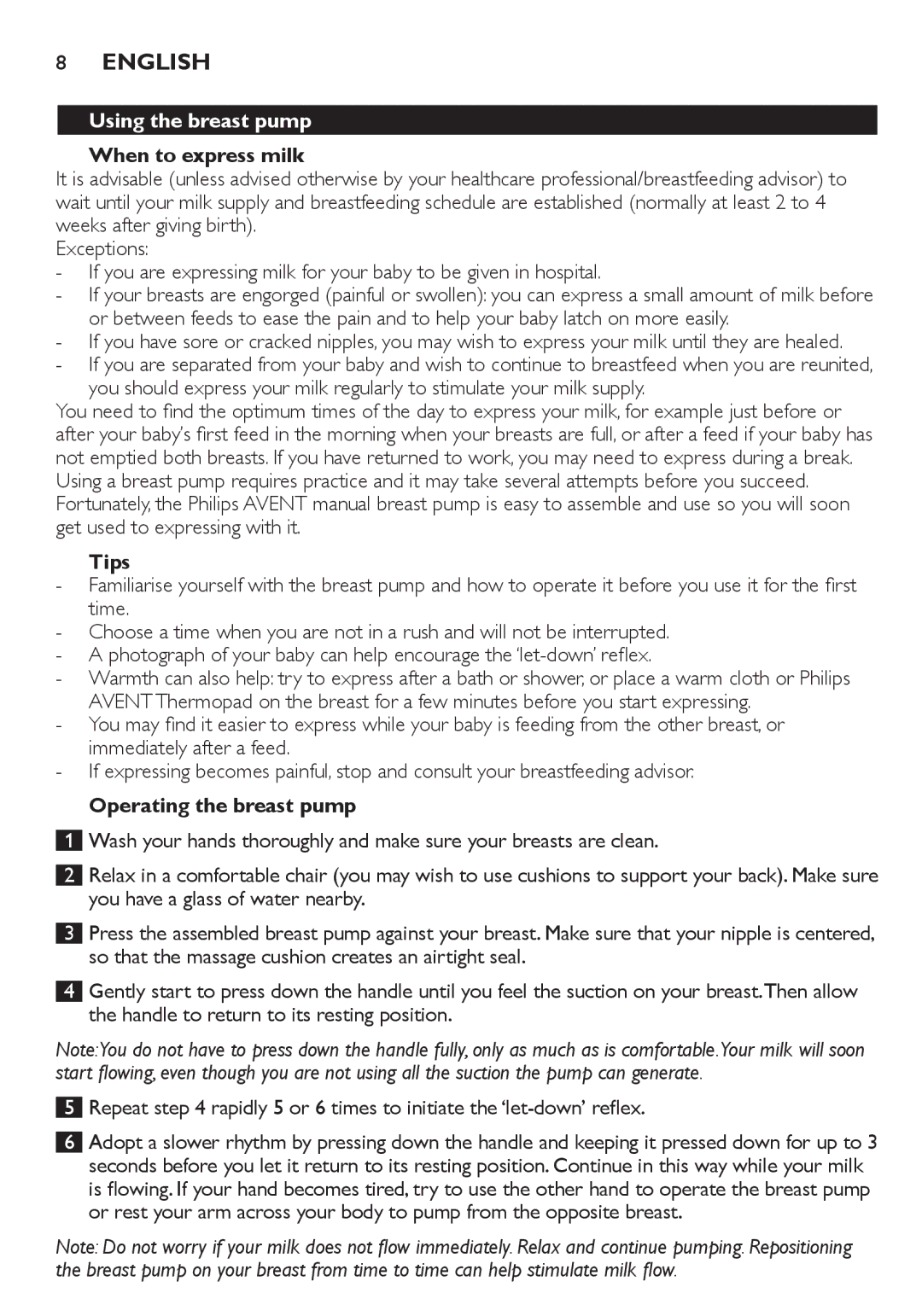SCF330 specifications
The Philips SCF330 is a cutting-edge baby bottle designed to meet the needs of both infants and parents, offering an exceptional feeding experience. This product is part of Philips' extensive range of baby care solutions, crafted with attention to detail and a clear focus on safety and convenience.One of the standout features of the SCF330 is its revolutionary Anti-Colic Advanced Bottle technology. This innovative design actively helps reduce colic symptoms in babies, thanks to its unique air vent system that minimizes the amount of air swallowed during feeding. By allowing air to enter the bottle from the bottom, it prevents vacuum pressure from forming as the baby feeds, significantly reducing the chances of gas and discomfort.
Furthermore, the SCF330 is equipped with a natural latch-on teat that mimics the shape and feel of a breastfeeding mother's nipple. This feature promotes a natural feeding experience, aiding in the transition between breastfeeding and bottle feeding for infants. The teat's unique design facilitates a comfortable and seamless latch, encouraging babies to suck and swallow effectively.
Material safety is a top priority for Philips, which is why the SCF330 is made from BPA-free materials. Parents can feel confident that the bottle is safe for use with their little ones, as it is crafted from high-quality, durable materials that withstand frequent use and cleaning.
Ease of cleaning is another aspect where the SCF330 excels. The bottle has a wide neck that allows for simple access, making it easy for parents to clean thoroughly. It is also dishwasher safe, adding to the overall convenience of the product.
Another important characteristic is the selection of nipple flow rates that Philips offers. The SCF330 comes with a medium-flow nipple, catering to infants as they grow and their feeding needs evolve. This adaptability makes it a versatile choice for various stages of your baby’s development.
Ergonomically designed, the Philips SCF330 features a lightweight body and an easy-grip shape that allows parents to hold the bottle comfortably during feeding. This thoughtful design reduces hand fatigue, ensuring enjoyable feeding sessions for both parent and child.
In summary, the Philips SCF330 embodies the ideal combination of innovative technology, safety, convenience, and adaptability. Its thoughtful design features make it a reliable choice for parents seeking a high-quality baby bottle that prioritizes comfort and ease of use for both their baby and themselves.

